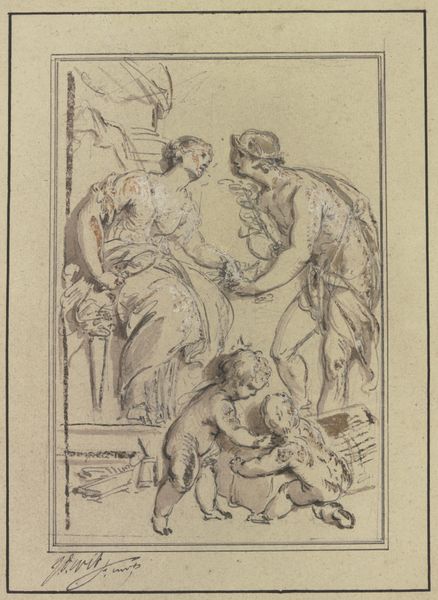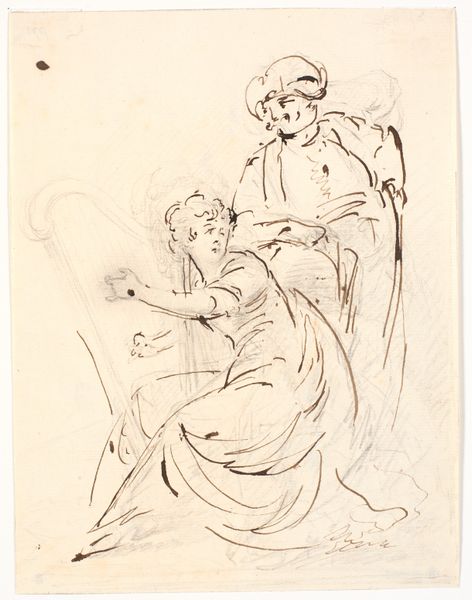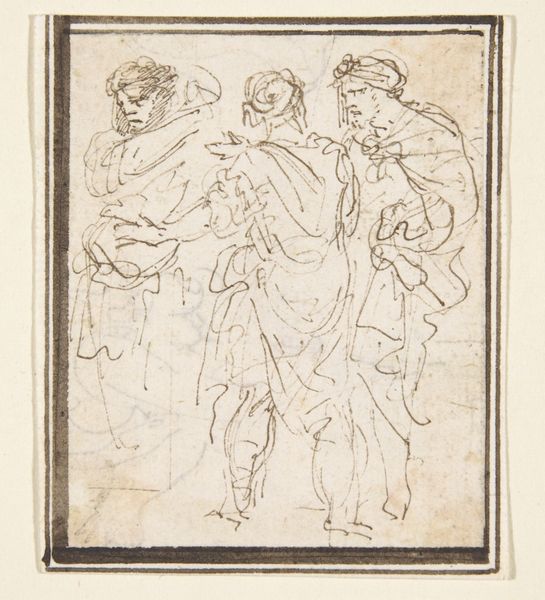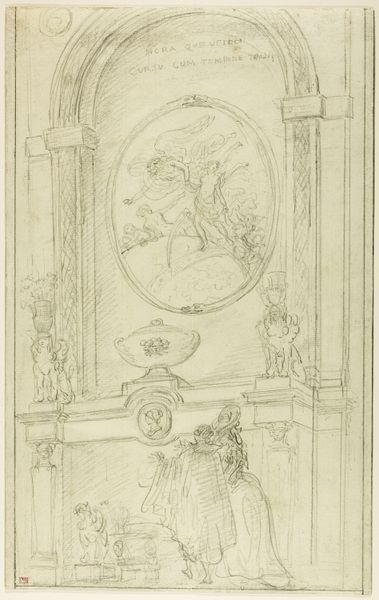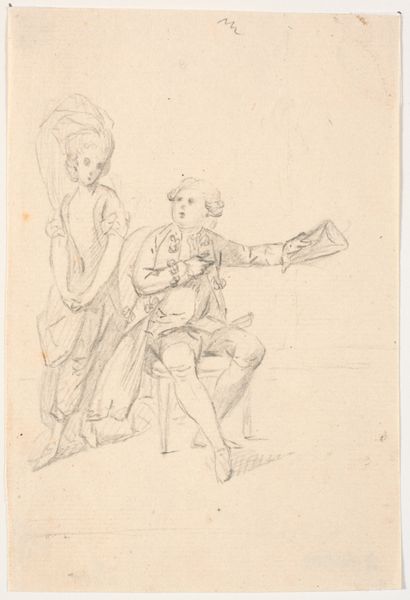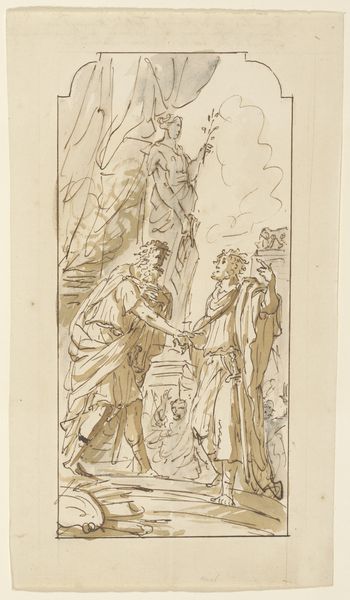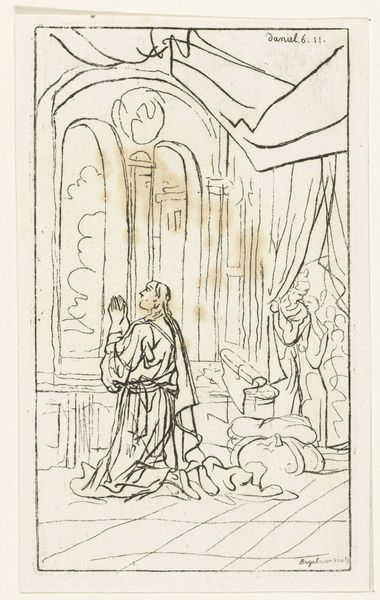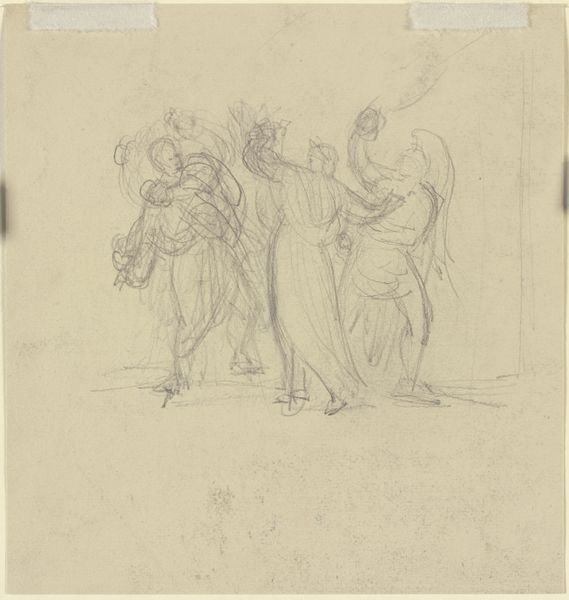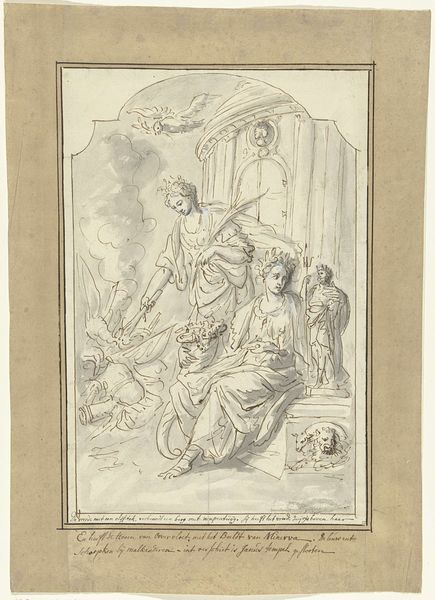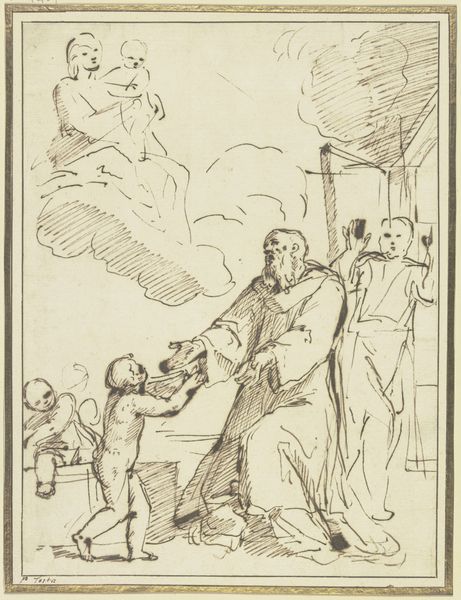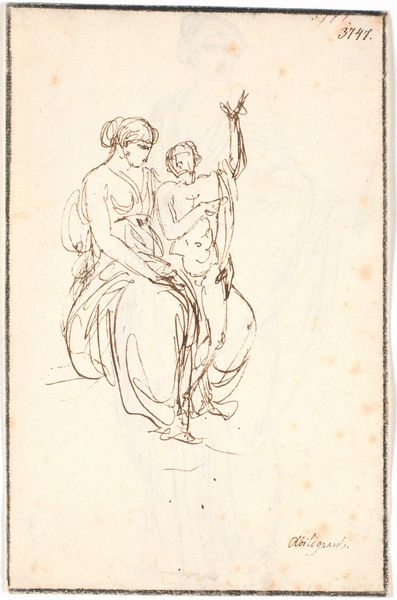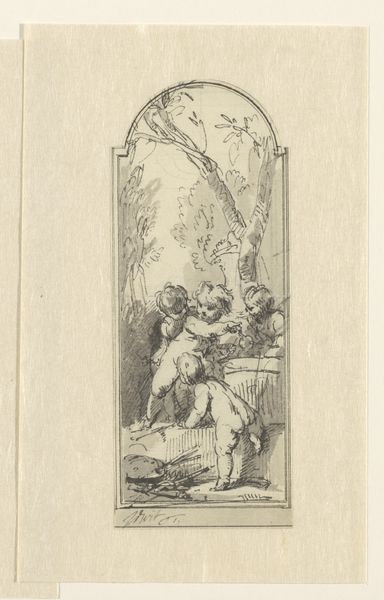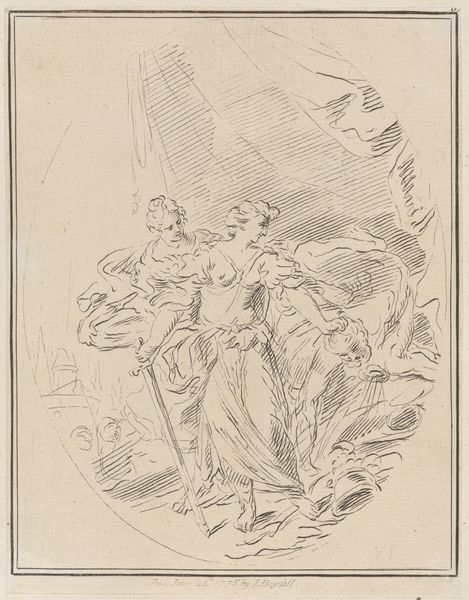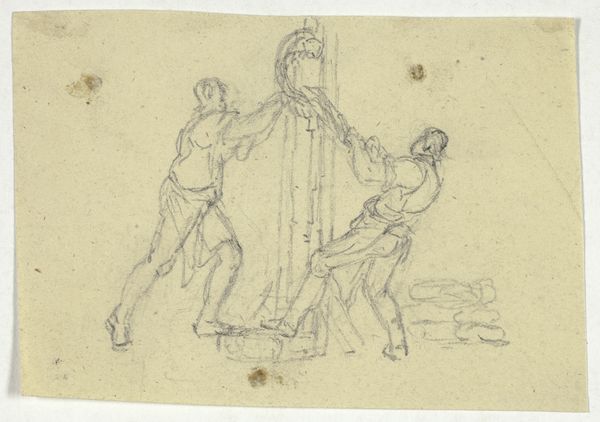
Frugtbarhedens gudinde, siddende foran Janustemplet sammen med et par legende (små)børn 1786 - 1789
0:00
0:00
drawing, paper, ink
#
drawing
#
neoclacissism
#
landscape
#
figuration
#
paper
#
ink
#
history-painting
#
academic-art
Dimensions: 269 mm (height) x 205 mm (width) (billedmaal)
Curator: This is a preparatory drawing by Nicolai Abildgaard, made between 1786 and 1789. The title translates to "Goddess of Fertility, sitting in front of the Temple of Janus with a couple of playful children". Editor: There's an immediate lightness to it. You can see the artist sketching out his ideas, experimenting with lines. It gives off the sense of an idea coming to life on paper. It feels... fragile, yet full of potential. What material is this work? Curator: It's ink on paper. Notice how the ink strokes are minimal but effectively convey a classical scene with carefully chosen symbolic elements. The Janus temple, the goddess, the playing children - fertility, peace, and new beginnings. The Temple represents transitions and duality. Janus, looking to the future and the past at once. Abildgaard is pointing to historical cycles, of renewal, but with the classical language favored during Neoclassicism. Editor: Fascinating how the deliberate choice of ink enables a fluidity that supports those symbolic links. It is a practical medium – and speaks volumes about resourcefulness! Also, is that architectural fragment just floating behind her? The building process seems so ungrounded. Was he reusing paper? There seems to be a ghost drawing beneath the goddess. Curator: Ah, good eye. That suggests Abildgaard probably did reuse existing paper. These preparatory studies would have been practical experiments for the finalized artwork. The drawing contains both history painting and landscape features, both crucial elements for history and Academic Art. Note Abildgaard's dedication to clean lines in representing bodies but an expressive, almost baroque dynamism in the rendering of the clouds, the natural landscape. These express life force. Editor: The more I look, the more that materiality speaks. Seeing the actual labor and revisions embedded in this study... I almost prefer the feeling it evokes compared to a finalized piece. The physical layers on this paper, however subtly rendered in ink, create a richer, tactile, symbolic effect than a finalized Neoclassical painting often possesses. Curator: It captures a beautiful creative genesis, revealing the process by which historical and cultural memory can be evoked through very specific artistic choices. The Neoclassical love of clean forms combined with this artist's vital inkwork results in a captivating symbolic expression. Editor: Ultimately, viewing this drawing allows one to think of the tangible acts and the conceptual frameworks, both of which inform each other constantly.
Comments
No comments
Be the first to comment and join the conversation on the ultimate creative platform.
